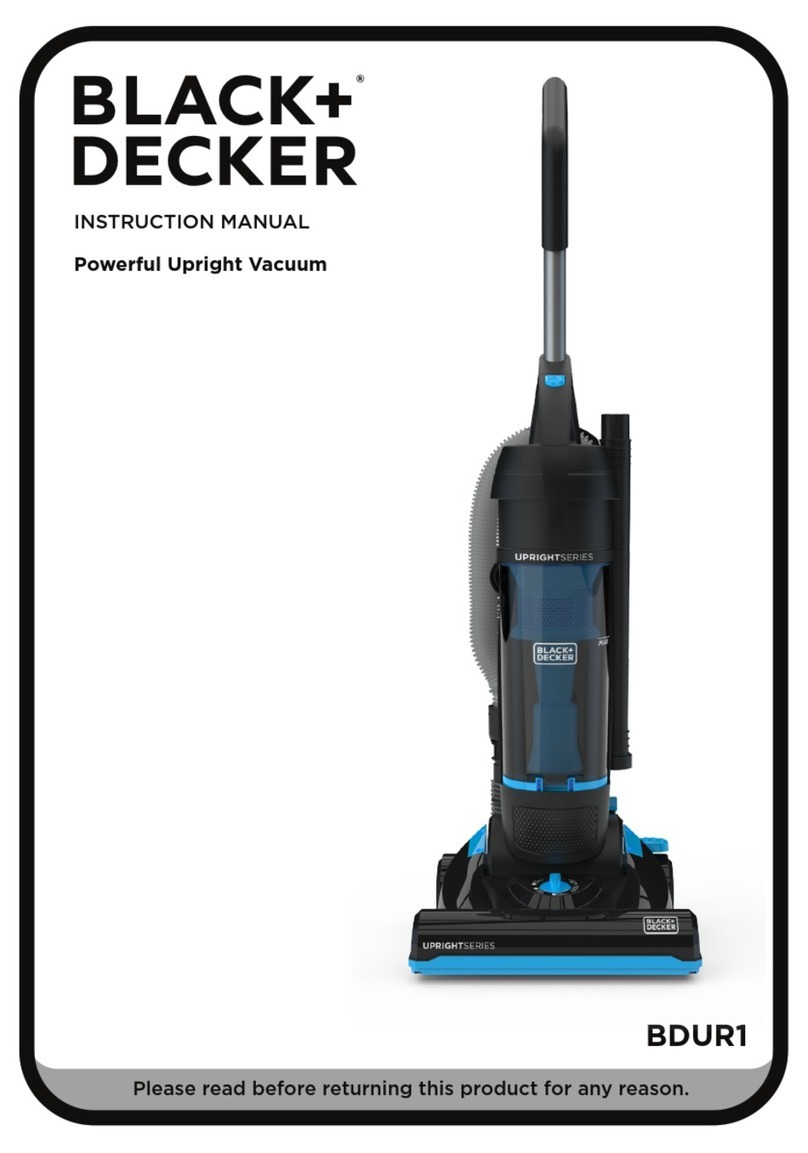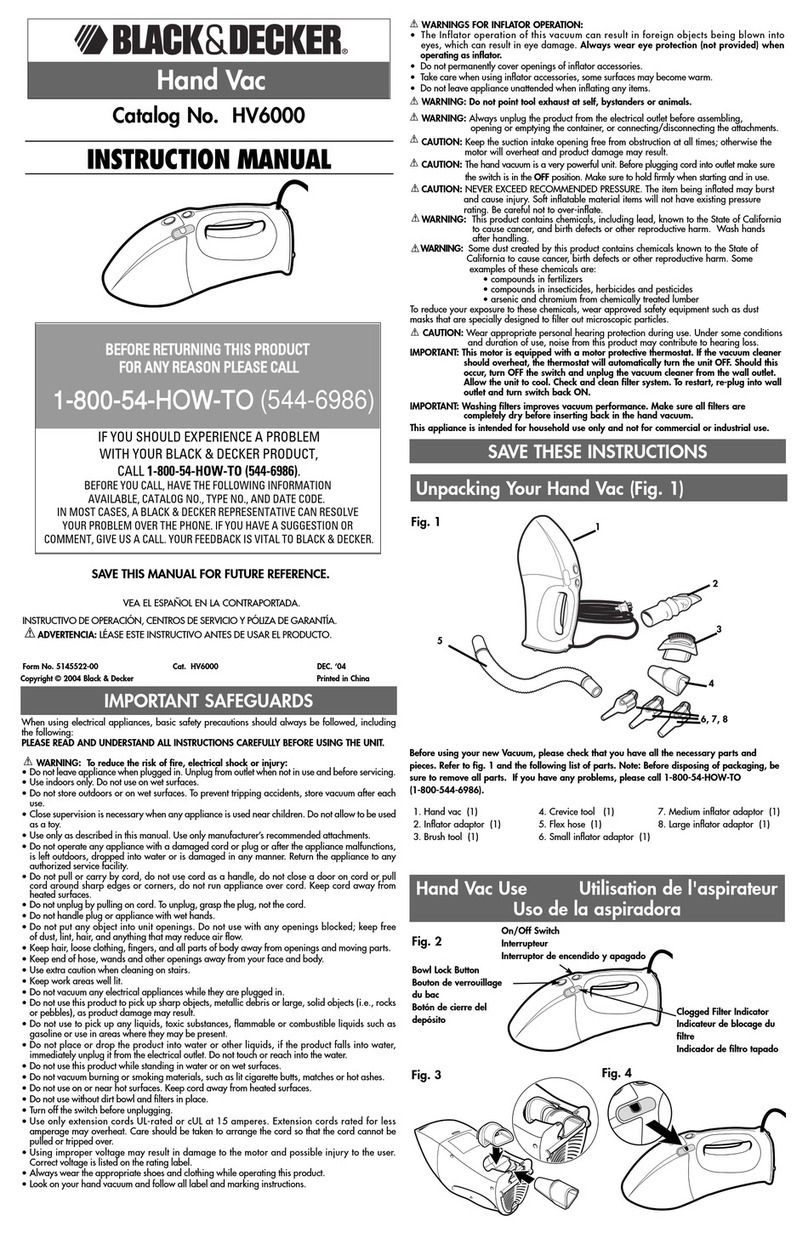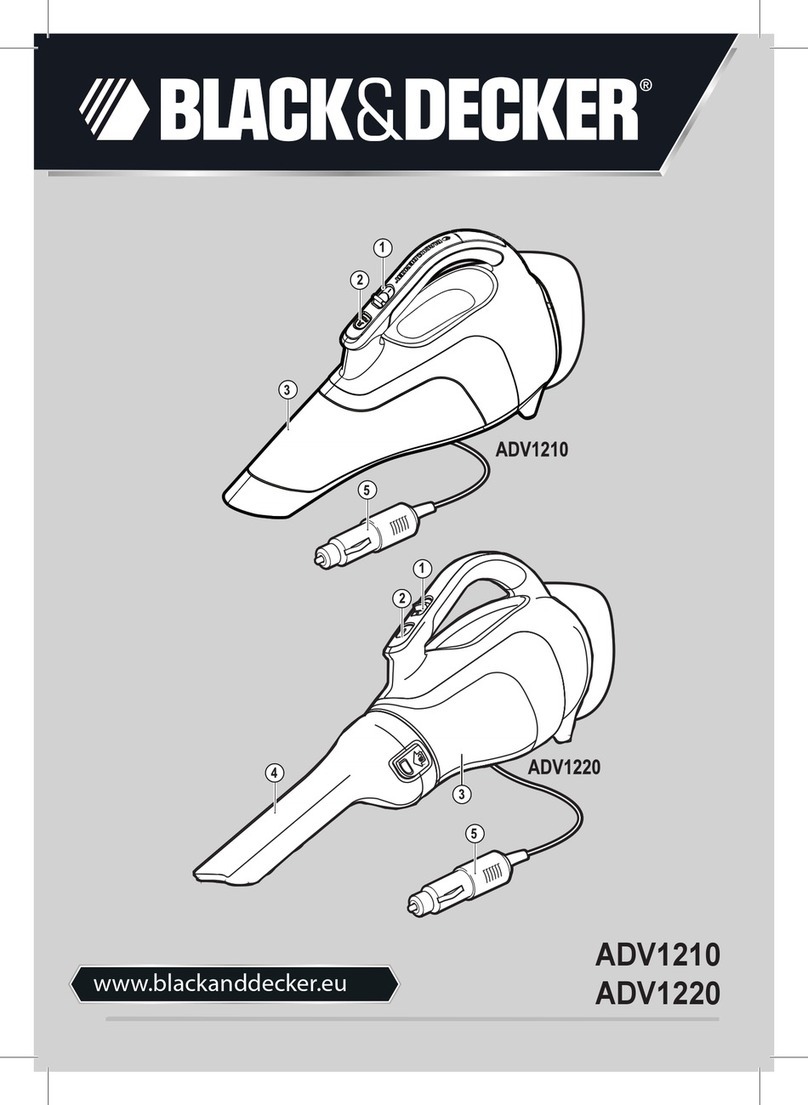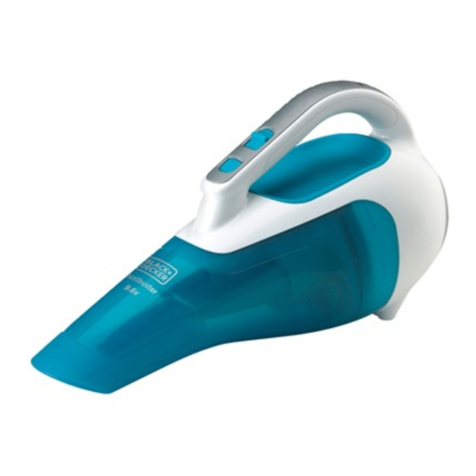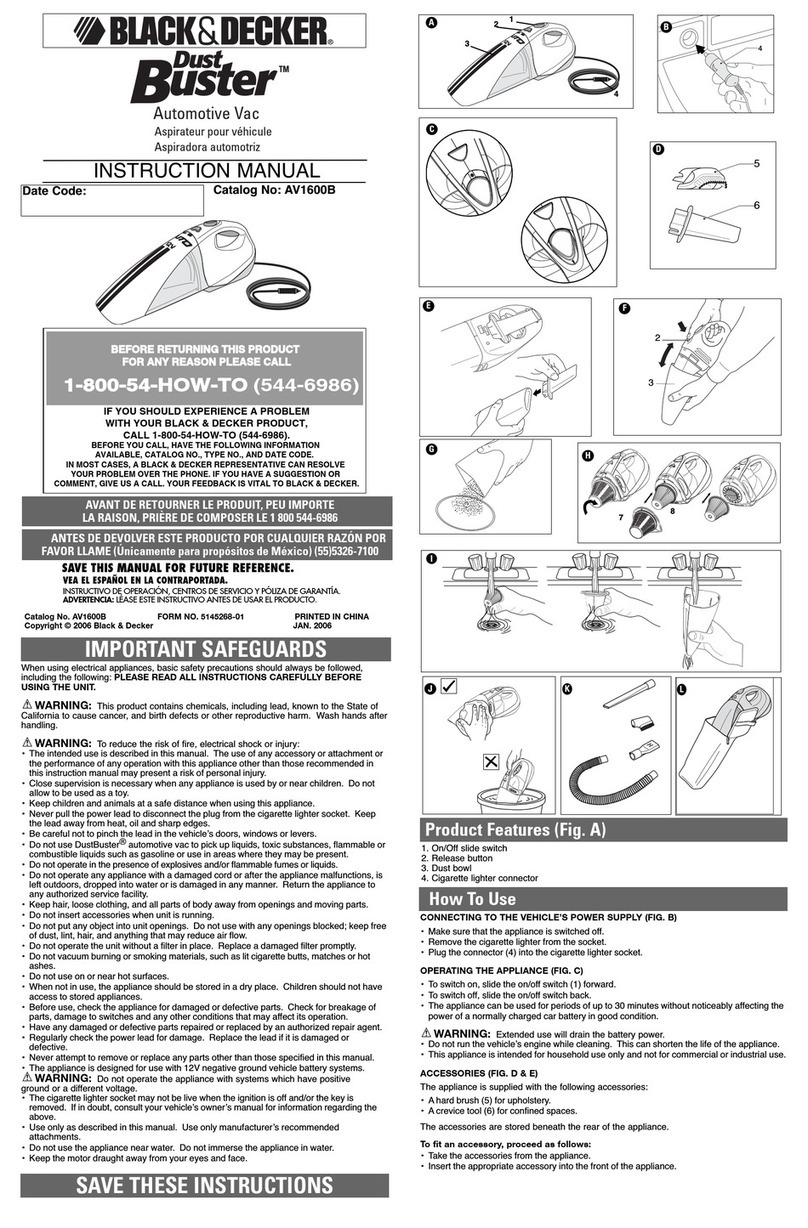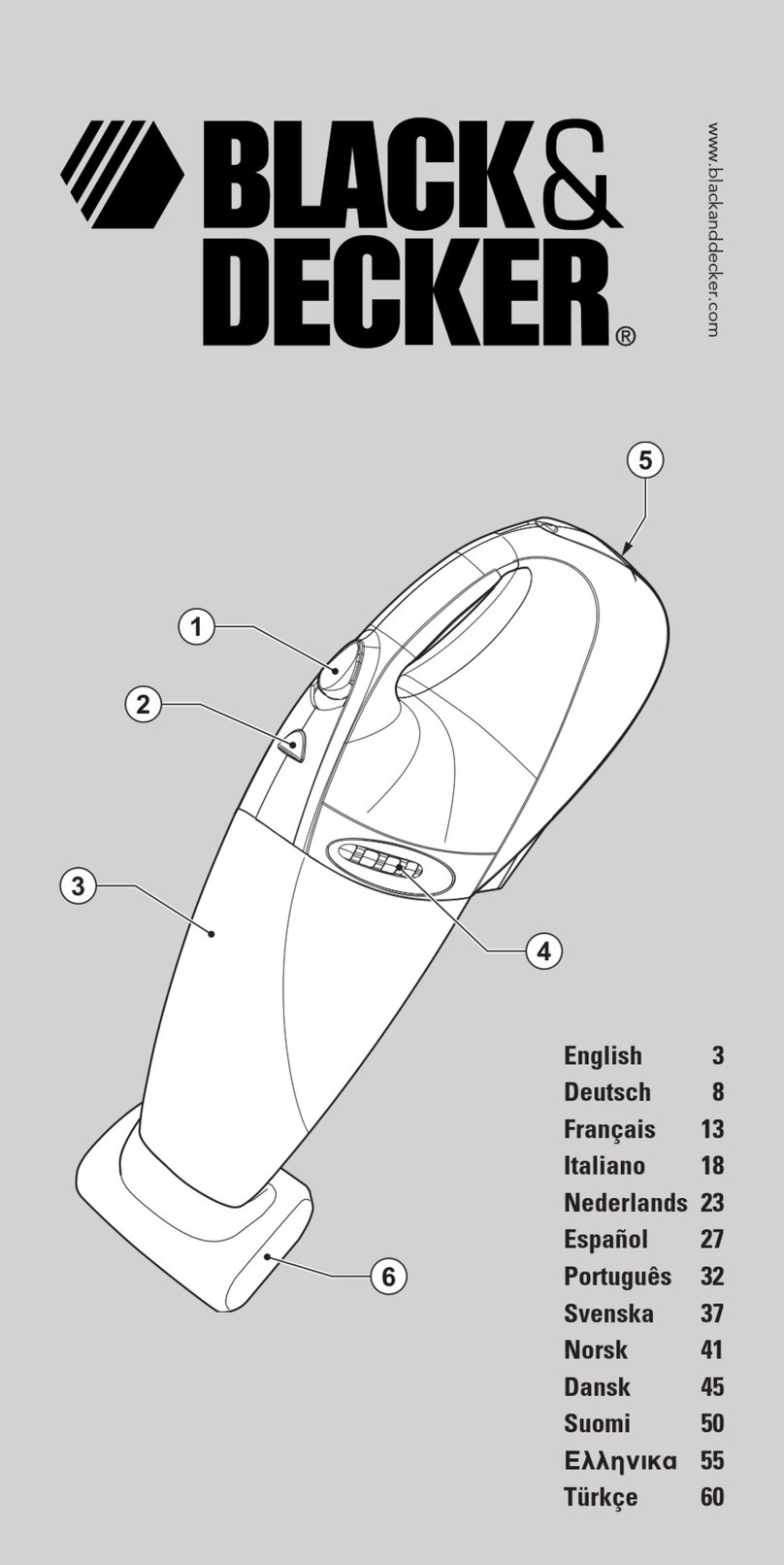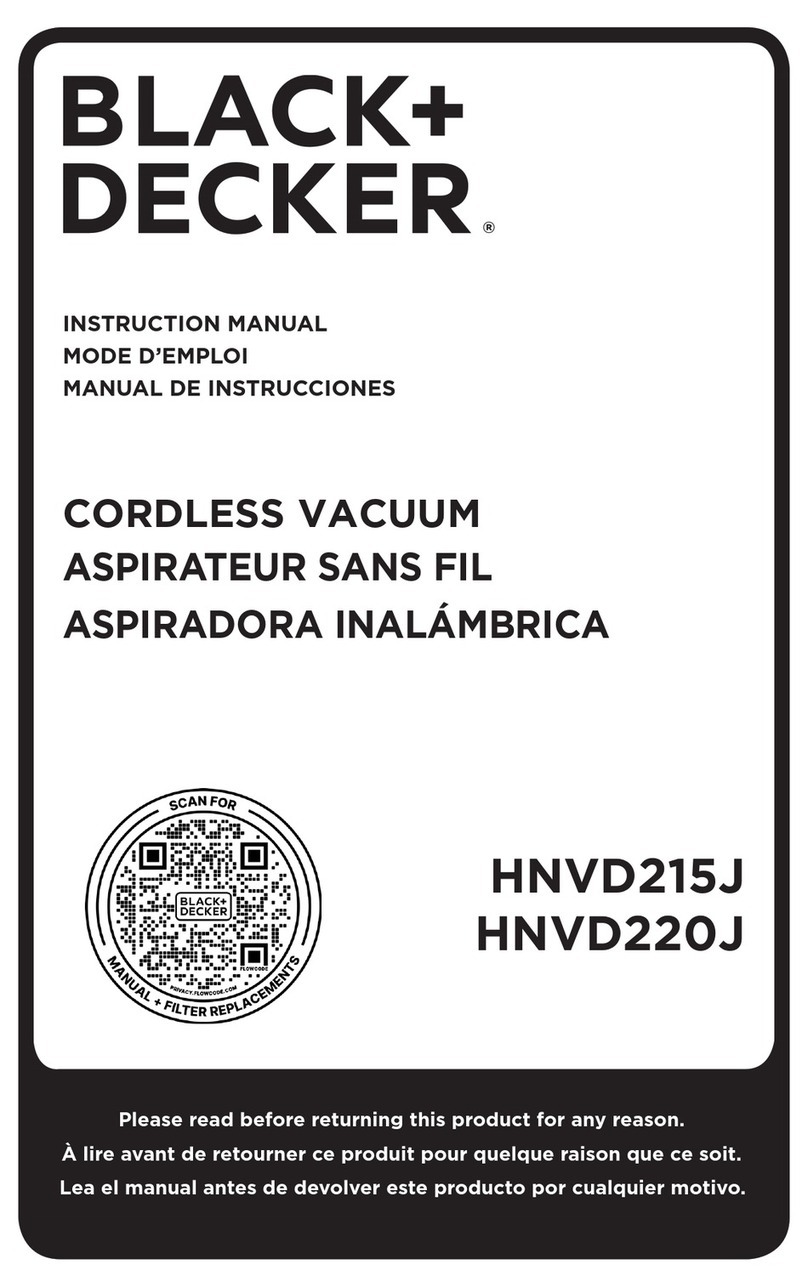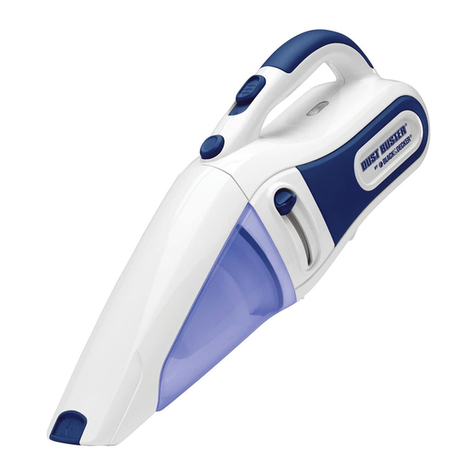
8
ENGLISH (Original instructions)
uCheck to see if receptacle is connected to a light switch
which turns power off when you turn out the lights.
uMove charger and battery pack to a location where the
surrounding air temperature is approximately 18°- 24°C
uIf charging problems persist, take the tool, battery pack.
and charger to your local service centre.
uThe battery pack should be recharged when it fails to
produce sufcient power on jobs which were easily done
previously. DO NOT CONTINUE to use under these
conditions. Follow the charging procedure. You may also
charge a partially used pack whenever you desire with no
adverse affect on the battery pack.
uForeign materials of a conductive nature such as, but not
limited to, steel wool, aluminium foil, or any buildup of
metallic particles should be kept away from charger
cavities.
Always unplug the charger from the power supply when
there is no battery pack in the cavity. Unplug charger
before attempting to clean.
uDo not freeze or immerse charger in water or any other
liquid.
Warning! Do not allow any liquid to get inside charger. Never
attempt to open the battery pack for any reason. If the plastic
housing of the battery pack breaks or cracks, return to a
service centre for recycling.
Installing and removing the battery (Fig. B)
Warning! Make certain the vac is switched off before
removing or installing battery.
To install battery pack
uInsert battery pack (5) into the vac until an audible click is
heard (Figure B). Make sure battery pack is fully seated
and fully latched into position.
To remove battery pack
uDepress the battery release button (6) as shown in Figure
B and pull battery pack out of the vac.
Operation
Warning! This product is for dry pick-up only.
uTo switch the vac on, slide the on/off switch (1) forward
(Fig. C).
uTo switch the vac off, slide the on/off switch (1) backward
(Fig. C).
Mounting accessories (Fig. D)
uThe brush tool (8) has a brush that can be used for
dusting and upholstery cleaning.
uThe crevice tool (7) allows for vacuuming in narrow and
hard to-reach places.
uTo attach an accessory, press the accessory into dust
bowl (3).
uCrevice tool can be stored on the unit as shown in (7a).
Removing dust bowl (Fig. E)
uRemove the dust bowl (3) by pressing the dust bowl
release button (2) and pulling the bowl down and out
(Fig. E).
Removing lters (Fig. F, G and H )
After you have released the bowl from the unit the lter is
inside bowl.
uRemove the lter from the bowl by pulling the lter out.
uDispose of the dirt inside.
uThe prelter (4a) and lter (4) are tted together.
uYou must twist the prelter to release from the lter to
allow you to clean each part separately as shown in gure
H.
Cleaning the product
Dispose of the dirt inside the dust bowl (3) as shown in gure
G. The dust bowl can be rinsed by water. However it needs to
be dried afterwards.
Warning! Never use this cordless hand vacuum
without its lters.
Note: The lter is re-usable, do not confuse them with
disposable dust bags, and do not throw it away when the
product is emptied. We recommend that you replace the lter
every 6-9 months.
Warning! Maximum dust collection will only be obtained with
clean lters and an empty dust bowl. If dust begins to fall back
out of the product after it is switched off, this indicates that the
bowl is full and requires emptying.
uRemove the lter (4) and shake or lightly brush any loose
dust off the lter.
uEmpty the dust from the bowl and wash if necessary.
uWash the lter regularly using warm, soapy water as
shown in gure H. Ensure that it is completely dry before
using again.
Note: The cleaner the lter is, the better the product will
perform.
uThe dust bowl can also be washed in warm soapy water.
Ensure that it is dry before re-attaching.
uNever immerse the product in water. A damp cloth and
soapy water should be used to clean the exterior of the
motor section. Always ensure the product is completely
dry before re-use or storing.
Troubleshooting
Problem Possible Cause Possible Solution
Unit will not start. Battery not installed
properly.
Battery not charged.
Check battery
installation.
Check battery charging
requirements
